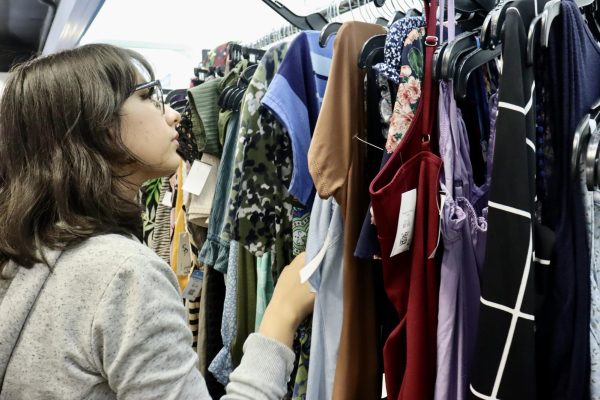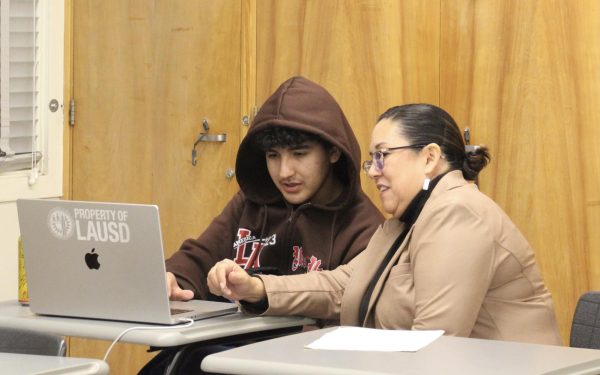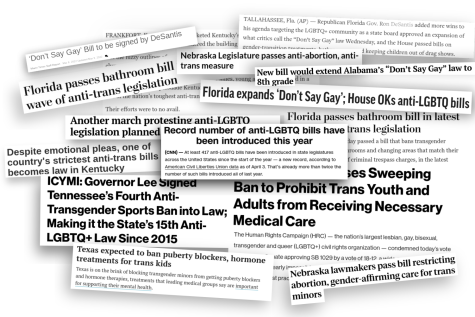Sexism is still a problem for women and girls
December 16, 2014
Ten hours of walking in jeans and a t-shirt, no skin showing aside from arms, neck and face. And over 100 times, Shoshana B. Roberts faced comments like “What’s up beautiful,” “How you doing,” and “Hey baby!” At one point a man only repeated “Damn. Damn!” as she walked away
Street harassment is far from unusual in the lives of many American women, even today in an age where Beyonce can give a performance to the backdrop of a giant glowing sign reading “FEMINISM.” Street harassment is just a single evidence of sexism; compared to some modern examples of sexism, in fact, the story of Shoshana Roberts seems downright tame.
In 2011, the internet saw a huge backlash against female video game critic Anita Sarkeesian, who posted six videos in a Webseries called “Tropes vs. Women.” Sarkeesian called attention to the rampant sexism in video games, not limited to the common female “armor” that consisted of chainmail bikiniwearing female characters with giant breasts. The response was aweinspiringly horrifying.
Sarkeesian’s Wikipedia page was edited to call her a hooker; gamers sent her photoshopped pictures of her being raped by video game characters; a video game was created with the invitation to “beat the b**** up” and Sarkeesian received numerous rape threats delivered to her own home before fleeing for her own safety. When Sarkeesian attempted to flag a tweet saying “@femfreq I will rape you when I get the chance,” Twitter responded that the tweet was not in violation of the Twitter Rules.
Most harassment isn’t as obvious as that. Sometimes determining which actions are harassment and which are just casual can be extremely difficult. The definition of sexism is simpler: it means thinking of one sex as inferior to the other. And teen girls and women are more often at the receiving end of it in the form of sexual harassment.
“It (harassment) involves unwanted behaviors,” Dianna Bartlow, chair of Women’s Studies at California State University Northridge, said. “People know how it feels to their gut.”
When girls and women listen to their guts, the statistics they report on sexism can be shocking. According to one study, 1 in 4 girls experience dating violence as teens, with dating violence being defined as a “controlling, abusive, and aggressive behavior in a romantic relationship… It can include verbal, emotional, physical, sexual abuse or a combination.” The abuse can be blatant or subtle, composed of obvious physical or verbal assaults simply serving to tear a partner down emotionally.
Few teen girls will go on to date someone who catcalls them across the street but it can be easy not to notice a subtle sexual comment. Title IX demands that schools investigate into any reported cases of sexual violence but a “That’s what she said” comment rarely calls for that much alarm.
The Equal Employment Opportunity Commission defines sexual harassment as including unwanted sexual behavior, from actual rape to more mundane actions, such as catcalling, pressure for dates, unwelcome physical contact including touching or pinching and sexual teasing. The list goes on. The problem for teens comes when it becomes difficult to distinguish normal teasing and unwanted sexual behavior.
Frankly, teens talk about sex. Sex is the punchline of hundreds of jokes, day in and day out, so that even a definition of the various behaviors that make up sexual harassment can become useless in the face of “It’s just an inside joke!” and “She knows I don’t mean it!”
Maybe she does, or maybe she doesn’t. For a teen girl, a vital survival strategy against sexism is to know what is or isn’t uncomfortable. “Jokes” can work to destroy a person’s sensitivity to what assault is actually meant seriously. The moment any teen (and this includes both girls and boys) is put into a sexual or simply sexist situation that makes them uncomfortable, it’s important to get out.
Sexism and abuse can be obvious or carefully hidden; depending on the person and situation, a sexual comment can be a hundred different things, and 99 of those things aren’t abuse. But 1 in 4 teen girls being abused by a dating partner, whether that is an overestimation or not, is nothing to laugh at. In a world where cases such as Roberts’ and Sarkeesian’s are still plausible (this not even mentioning all the times things like rape on college campuses are brought up in current media), there is something wrong with how common sexism is.
“There should be an awareness,” said Dianne Bartlow. “I think the first piece is… to become conscious and aware.”

















